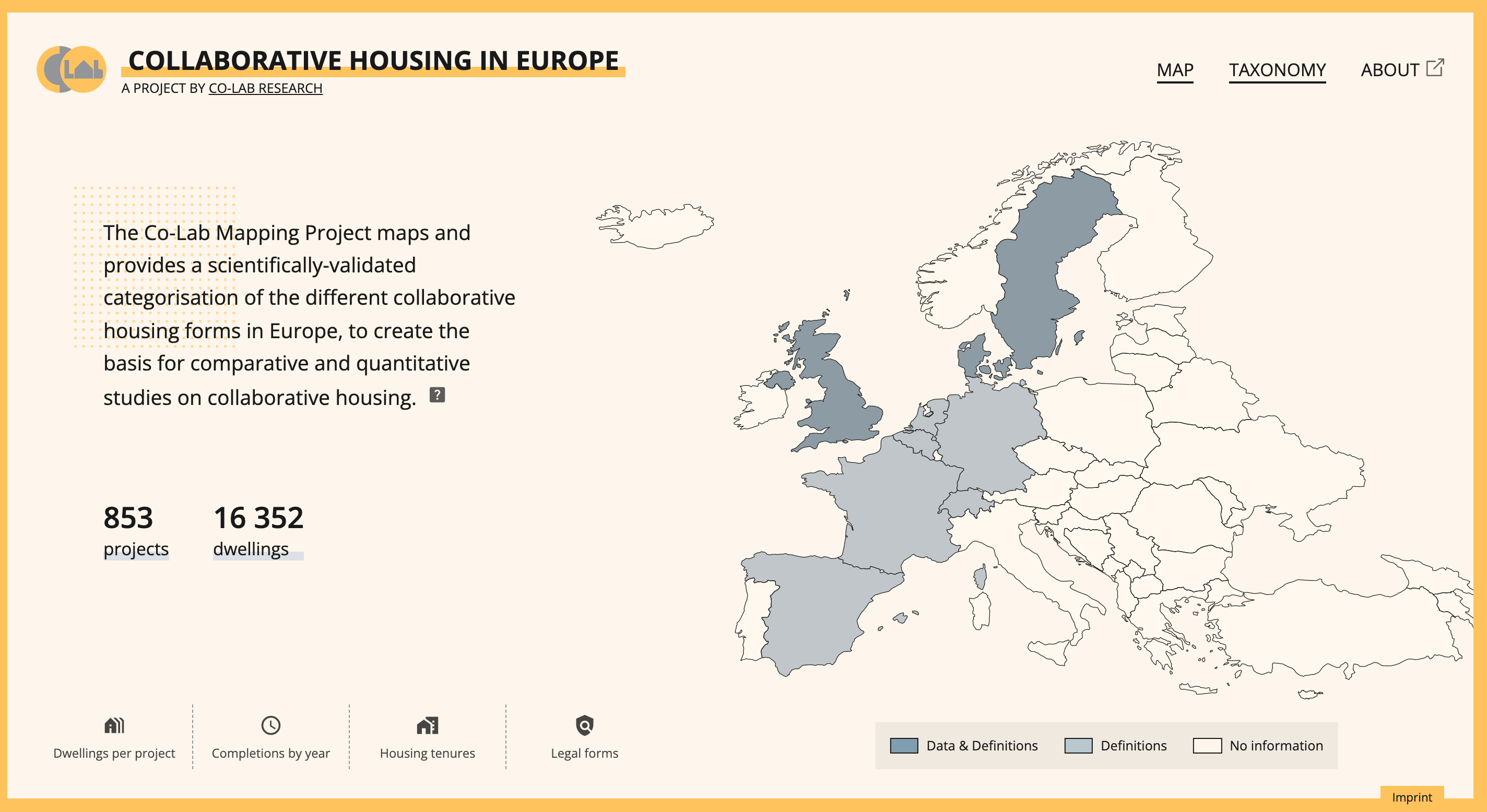Quantitative data collaborative housing
Quantitative data on collaborative housing are currently scattered or even only available upon request, and lack standard definitions. This prevents a comparative understanding of the challenges and opportunities that these housing forms offer. Furthermore, comparative data are needed to facilitate mutual learning and communication amongst users across countries and regions.
First step completed
The recently completed Co-Lab Mapping project (funded by the NWO KIEM Creative Industries grant in 2019-2020) was the first step to map and provide a scientifically-validated categorisation of the different collaborative housing forms in Europe in a visualisation tool. The next step will consist of aggregating and refining dispersed data in a coherent and comparable way.
FAIR Data Fund for next step
In a new round of the FAIR data fund, researchers from Architecture and the Built Environment were again among the winners. Darinka Czischke and Sara Brysch (Management and the Built Environment) received funding for refining existing datasets on collaborative housing, in line with the FAIR principles (Findable, Accessible, Interoperable and Reusable).
The FAIR Data Fund will allow Darinka, Sara and their team to refine their existing datasets and make them FAIR. The published datasets create a solid basis for comparative and quantitative studies on collaborative housing.
More information
Have a look at the site of the Co-Lab Mapping Project or the project page of Co-Lab Research.

